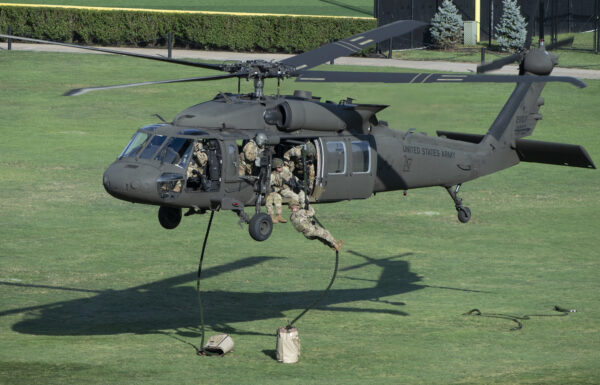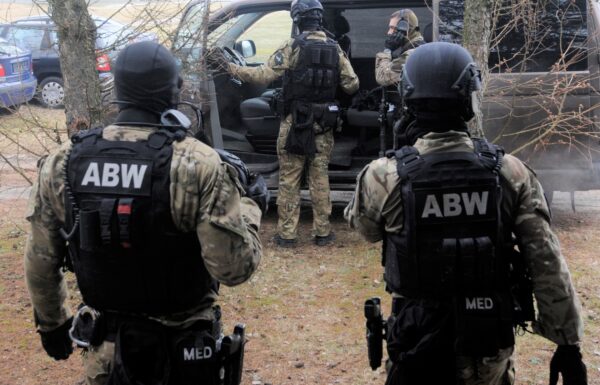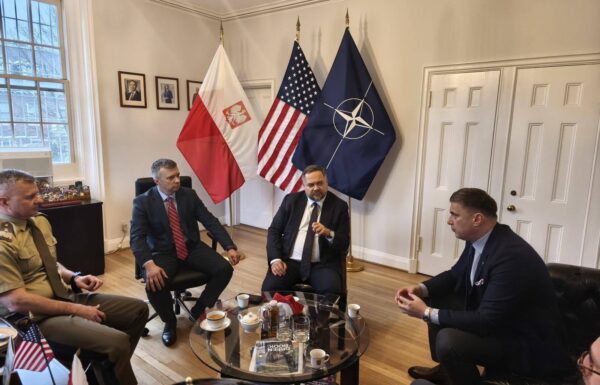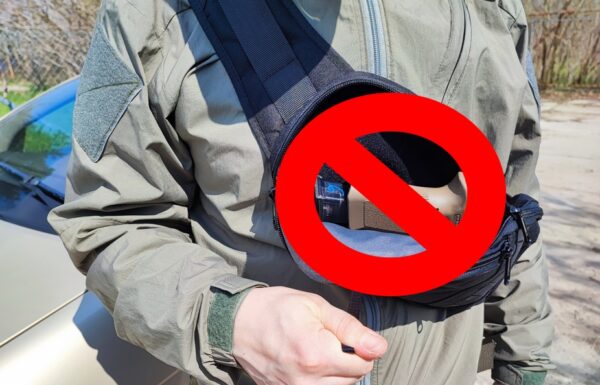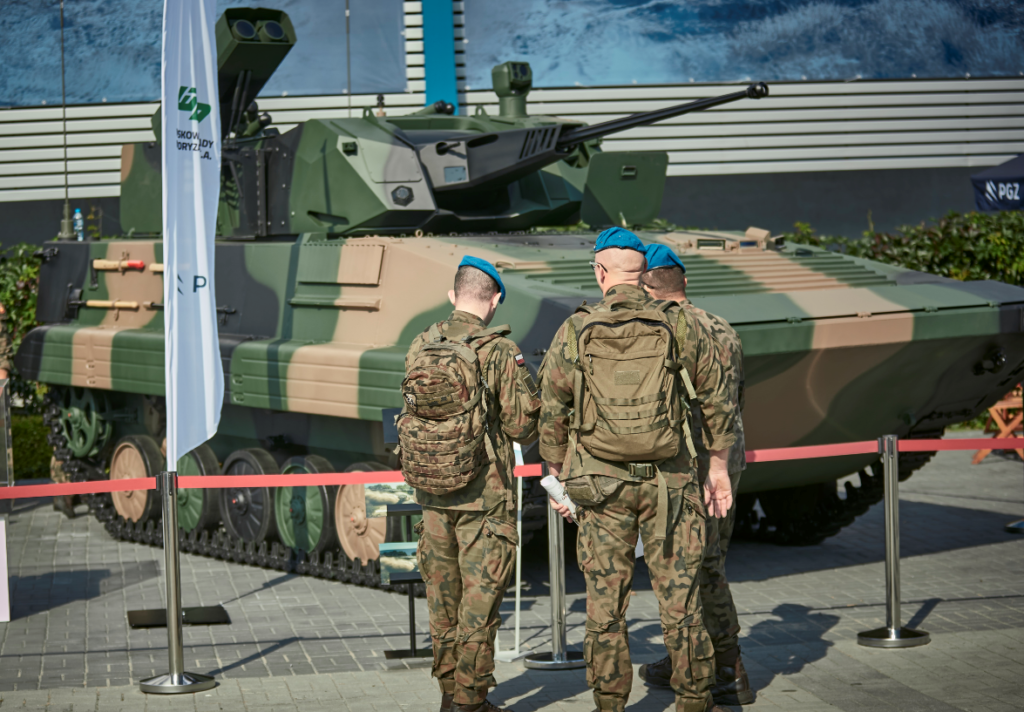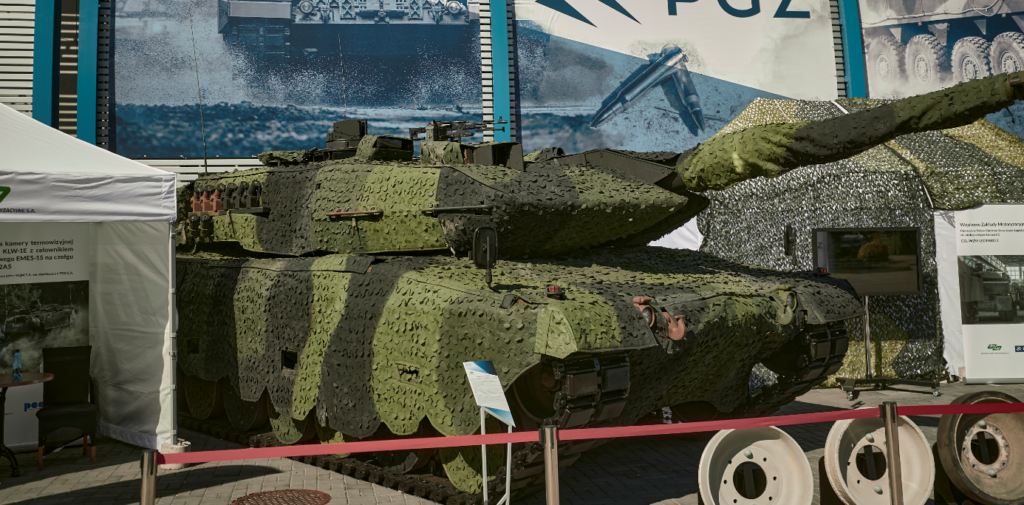The story of Military Automotive Works (WZM or Wojskowe Zakłady Motoryzacyjne in Polish) began when the Second World War was ending. The JW 2123 military unit dedicated to servicing military vehicles was formed in Poznan in February 1945. As the years passed, the demand rose so the unit was disbanded and its works located on Świerczewski Street became Central Workshop For Personal Car Repairs No. 42.
As their expansion continued, according to the ordinance No. 75 issued by the Ministry Of National Defense on 5th of August 1952, the works were renamed Military Automotive Works No. 5 in Poznan. By then, WZN was responsible for servicing a variety of vehicles including Gaz 67 and 69, Škoda 1101 and 1108, Opel Kadet, Mercedes 170, Olimpia, and motorcycles made by Harley Davidson and Jawa.
Like most contemporary companies, the Military Automotive Works were engaged in rebuilding Polish infrastructure after the war. Besides taking care of devastations caused by military operations, creation of a country-wide car transport network and maintenance of vehicles were vital necessities. In the era of socialistic central planning, use of entities subordinate to the Ministry Of National Defense was a widespread practice, as the majority of infrastructure had to be built from scratch. Even in the later years, the Military Automotive Works kept servicing cars and trucks, such as Wołga, Warszawa, Zim, Nysa, and Żuk
Aerial view of Military Automotive Works at Dąbrowskiego Street in Poznań
The first step into modernity
The construction of a new and progressive for its time workshop located at Dąbrowskiego Street in Poznan was started in 1969, and at least partially finished in 1980 when all of the production was moved to the new facility. During that time, on 1st of January 1973 two companies were merged: Military Automotive Works No. 5 combined with Military Mechanical Works. This gave the company the expertise needed for servicing tracked, and wheeled vehicles. In 1984, further modernization extended their capacity to handle armored vehicles which gave the foundations for the company’s modern operations.
Part of WZM exposure at 2021 MSPO exhibition in Kielce
The final step was the transformation of Military Automotive Works No. 5 into a joint stock company owned by the Public Treasure under the name of Military Automotive Works S. A. Under that name it currently functions as a member of the Polish Armament Group (PGZ).
Modernization Programs
Many years of experience in servicing tracked and wheeled armored vehicles helped Military Automotive Works accomplish a series of projects leading to modernization of the military machine park during the transformation of the Polish Armed Forces.
Modernization of wheeled armored personnel carrier OT-64 SKOT could be an example. Development works taking place in 2002-2004 was wheeled armored personnel carrier Ryś. Military Automotive Works created a modular vehicle that passed the requisite military tests in 2004. The Ryś armored carrier was equipped with a quickly replaceable powerpack propulsion system with a diesel engine, semi-automatic transmission, and a central tire inflation system. One of the advantages of that vehicle was its modular construction, making field repairs easier, another was suitability for being carried onboard medium transport planes (such as the C-130 Hercules family). There were plans for equipping the vehicle with more advanced weaponry.
During the International Defence Industry Exhibition (MSPO) in 2003, Ryś equipped with a 30 mm caliber Mauser MK 30 autocannon was presented. While the Polish Armed Forces decided to purchase and field Rosomak wheeled armored personnel carriers instead, the work done was the basis for further development.
Modernized BMP-1
Despite often expressed desire to replace it, BMP-1 (used in Poland under designation BWP-1) remains a primary vehicle of Polish mechanized infantry. While it was considered a thoroughly innovative design in sixties and seventies, by the end of the century it grew old and is presenting a much lesser threat to potential enemies. Currently, its armament and ballistic protections fail to meet the norms of modern battlefields.
One of company’s offers for the Polish Armed Forces — modernization of BMP-1
While waiting for the new generation of infantry fighting vehicles, the Polish Ministry of National Defense seeks stopgap alternatives that would enhance capabilities of mechanized forces. Rosomak wheeled armored personnel carrier took over some tasks after being fitted with anti-armor guided missiles with 30 mm Bushmaster chain gun giving it suitable fire power. It was enabled by using a ZSSW-30 unmanned turret, designed by Huta Stalowa Wola and WB Group. That piece of technology will be the main armament of a future Borsuk (Polish for Badger) infantry fighting vehicle. Before the Polish Armed will start receiving them, a temporary measure is necessary to maintain at least a partial combat capability in the meantime.
Military Automotive Works offers a solution. They propose a quick and cheap modernization process for BMP-1, adjusting it to demands of the modern battlefield as much as it is remotely possible for a sixty-year old design. What seems important to the Ministry Of National Defense decisive process, despite the modernization process increasing the vehicle’s total mass, the vehicle is supposed to retain its amphibious capabilities.
The intended works will slightly change the silhouette of the vehicle, heightening the frame by 200 mm, which increases the internal capacity by approximately 2 cubic meters. That increases the comfort of the crew and passengers, but also gives more space to fit the new equipment. Hatches were redesigned and the suspension was reinforced with additional dampers and elastomer end stops. Those changes allowed for addition of a ramp for the infantry and replacement of the hull’s armored plating. The vehicle is supposed to meet the 3rd level of ballistic protection according to STANAG 4569 norm.
BMP-1 received a heightened frame as a part of modernization
Main weapon will be modernized as well. Unmanned turret will be fitted with an Mk44S Bushmaster autocannon (being currently a standard weapon for the Polish Armed Forces), Spike anti-tank guided missile launcher, 7.62 mm machine gun, and smoke grenade launcher. The commander and the gunner will get new optics suitable for day and night operations
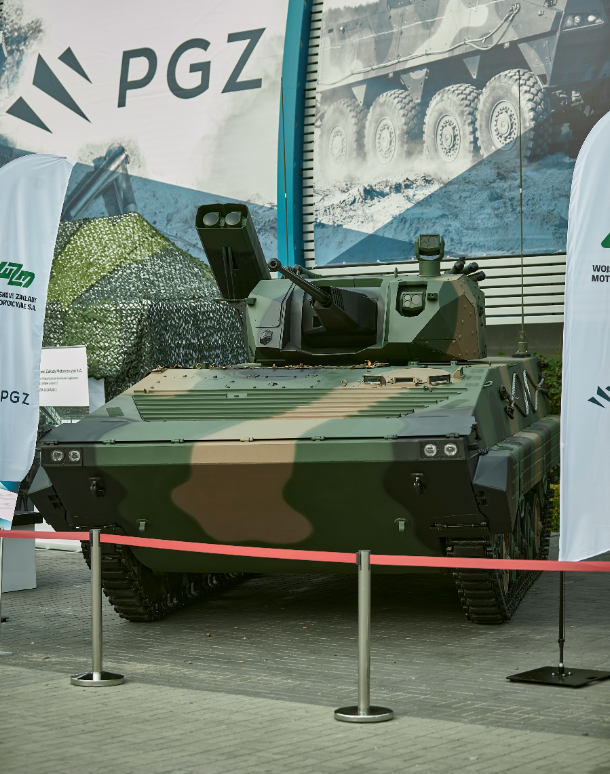
Modernized BMP-1 will be armed with 30 mm autocannon and the Spike anti-tank guided missiles launcher
The changes also assume improved comfort and safety of the crew and the passengers. BMP-1, known for its spartan conditions, will be equipped with heating and air conditioning integrated with ventilation and air filters, new fire systems, and new NBC contamination detection system. New electronic systems will be implemented, with communications based on RRC-9311 radio, internal comms, and communication IT systems meeting the modern demands.
Modernized BMP-1 will have a new armor meeting 3rd level of ballistic protection according to STANAG 4569 standard
The list of changes above makes it seem that the BMP-1 modernization process will be much more complex than the Ministry Of National Defense approved modification of T-72M1 tank taking place in BUMAR-Łabędy workshop. It remains an open question, if the Ministry Of National Defense in anticipation of quick replacement of BMP-1 with Borsuk won’t cancel the modernization program, as it did in case of Ryś being replaced by Rosomak.
Modifications to Leopard 2A5
While the Leopard 2A5 main battle tank is considered the youngest and the most modern construction serving in the Polish Armed Forces, its combat potential could still be improved.
Currently, the older Polish Leopard 2A4 are modernized to 2PL standard. According to the Military Automotive Works ideas, the 2A5 variant could be subject to a series of improvements. The company proposes replacement of the older systems and elements, mainly using Polish-produced components already used in other constructions serving in the Polish military. The whole process would be handled by the Polish defense industry.
All the works would be executed by the Military Automotive Works with the aid of other Polish companies involved in the military industry. The proposed adjustments would include modifying the electro-optic fire control instruments. The commander’s PERI-R17A2 hunter/killer sight, and the gunner’s EMES 15A2 main sight will be fitted with ASTERIA KLW-1 third generation thermovisual cameras produced by PCO S.A., which will increase range of sight during the day and night, and enhance targeting precision.
The changes will also touch the radio communication systems. The tank will be fitted with digital RRC-9311 AP radios. Using two radio transmitters will allow for swift change between the battle and the command tank configuration.
Internal communication will be improved as well, with the new solution allowing the crew members to communicate vocally and exchange digital data between crew stations and surrounding units.
The low-caliber weapon systems would be refitted by Polish companies. The MG3 machine gun would be replaced by 7.62 mm UKM 2000 produced by ZM Tarnów S.A.
An interesting option is use of multispectral mobile camouflage designed together with LUBAWA S.A. company. The camouflage pattern blurs into the natural surroundings, preventing visual recognition. The materials used decrease chance of detection by night vision devices, reduce infrared emissions, and dampen reflection of radio waves used by radars.
Another proposal offered by Military Automotive Works is modernization of Leopard 2A5 main battle tanks including LUBAWA’s multispectral camouflage
The Military Automotive Works also assumes extending the program to include international cooperation. The company, together with German KMW, will be reinforcing the tank’s hull armor, both the primary and the secondary, turret, and enhancement of both the passive and active defenses. The propulsion and tracks will be reinforced as well. As a part of extended modernization process, the Military Automotive Works plan to work on digital fire control systems, air conditioned crew compartments, and blast dampers.
Increasing combat capabilities of Polish Armored Forces seems to be a priority in the currently implemented strategy of adapting the Polish military to the development of geopolitical conditions. It remains an open question in what way it will be realized. Will it be done by purchasing new American Abrams M1A2 SEP v3 main battle tanks or improving vehicles already in service. Undisputedly, Leopard 2A5 tanks have great combat potential, and can be repaired and serviced by Polish companies. Additionally, the Polish defense industry has the capacity to manufacture 120-mm smoothbore guns and suitable ammo. American tanks, on the other hand, while powerful and representing state of the art when it comes to armored vehicles, would require purchase of all their components abroad…
Future Of The Company
The Military Automotive Works, like other Polish defense industry companies, have to compete in a difficult market. Their main customers are the Polish Armed Forces, so all of their projects are tailor-made for the demands of the Polish Ministry Of National Defense. One of those, which has the significant chance to be successful is the quickly replaceable power-pack style engine module. It was designed and developed by the Military Automotive Works as the engine for the New Amphibious Infantry Fighting Vehicle Borsuk project. Like the new infantry fighting vehicle itself, the engine project financed by National Center For Research And Development. The results of the work was adaptation of the MTU 8V199 TE20 engine (530 kW maximum power, 2700 Nm maximum torque) and the X300 automatic transmission for Borsuk. The mass of the engine module, including engine oils, is approximately 3200 kgs, and the disassembly time is below 1 hour.
The historical legacy of the Military Automotive Works involves performing servicing and then modernization operations. The company developed multiple modernization projects handling the most pressing needs of the Polish Armed Forces. The most discussed program is modernization of BMP-1. While the decision makers seem to be favoring the quick introduction of Borsuk IFV, regardless of political support they can muster, it will still take a lot of time. In the meantime, soldiers will keep traveling in obsolete baseline BMP-1, like their fathers and grandfathers.


